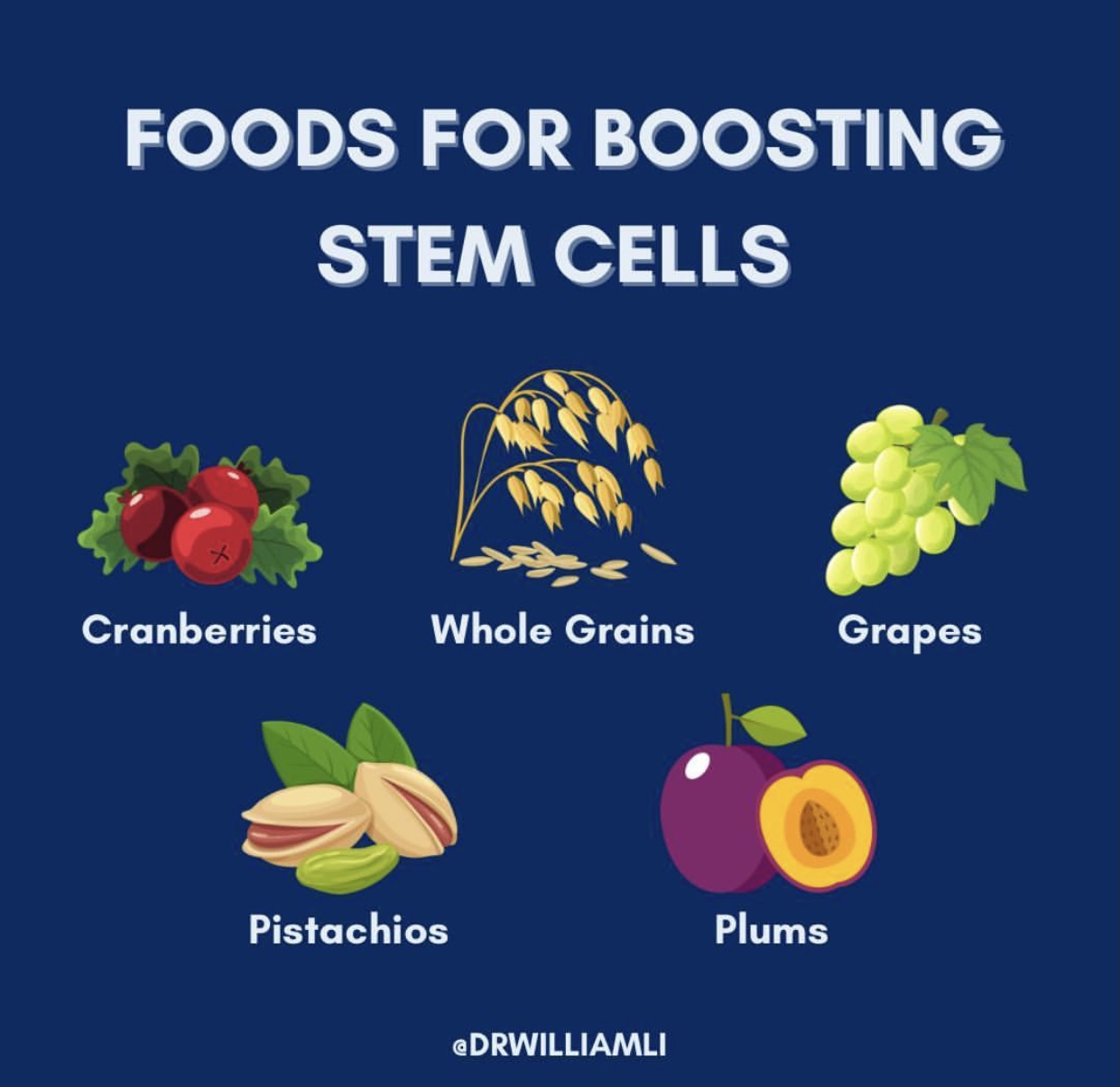Regenerative medicine holds great promise for the repair of damaged tissues and organs and the restoration of functionality by stimulating the body’s own regenerative capacity.
One of the most commonly used treatments in regenerative medicine is the use of stem cells because they have incredible potential to regenerate and induce healing in the human body.
Stem cells are unspecialized, meaning that they have the potential to become another type of cell. In an embryo, the stem cells divide rapidly and differentiate, which is when they become all the different types of specialized cells necessary to make up the entire organism. Some divide into other stem cells and remain in the body after birth to continue their work of replicating and differentiating to help the body regenerate and heal as needed.
Stem cells have another incredible ability. They can lie dormant for a long time, then suddenly begin dividing and renewing themselves when needed, and they can go on dividing as long as necessary. It is possible that a single stem cell can proliferate, which means divide into two identical daughter cells, throughout a person’s entire life. However, our diminishing amount of available stem cells fuels one of the theories behind aging.
Where are stem cells found?
Stem cells are found in humans at any age. Early embryonic stem cells can be obtained from fertilized eggs that are a few days old and then grown in the lab for research. Due to obvious ethical concerns with these types of stem cells, embryonic stem cell use is not legal in the United States.
Stem cells obtained from adult human tissues are known as somatic (non-reproductive) stem cells. There are several different types of somatic stem cells. Hematopoietic Stem Cells become different types of cells in the blood. Mesenchymal Stem Cells have the ability to regenerate bone cells, fat cells, muscle cells, and cartilage cells. Neural Stem Cells help to regenerate nerve tissue in the brain and spinal cord. Epithelial Stem Cells help to regenerate the skin and Intestinal Stem Cells help in repairing the gut lining. Compared with embryonic stem cells, somatic stem cells have lost the ability to continue to multiply and become different types of tissue, but still retain an amazing capacity for dividing and restoring tissue. There are many sources of adult stem cells, but some are safer to use than others. Currently, the most common three sources of stem cells that are allowed in the United States come from bone marrow, adipose, and amniotic tissue (specifically from the umbilical cord and the placenta).
Bone marrow contains both hematopoietic and mesenchymal stem cells. Bone marrow transplant of stem cells is a commonly known type of stem cell therapy which has been used for over 50 years. High doses of chemotherapy or radiation therapy used to fight cancer cells often destroy bone marrow stem cells. Bone marrow derived mesenchymal stem cells (BM-MSC’s) are the most commonly used mesenchymal stem cells for scientific and clinical purposes (1). However, BM-MSC’s decrease significantly with age, as does their differentiation potential (2). In addition, the process of obtaining BM-MSC’s carries the high costs, risks, and pain associated with surgery and therefore may not be the best option for regenerative procedures.
Adipose derived mesenchymal stem cells are an easier source to obtain and have demonstrated in vitro studies to be as effective as either of the other types of stem cells. However, there are concerns about safety. Adipose is where the body stores toxins and these toxins may influence the effectiveness of these stem cells. Additionally, of the 22 cases of adverse effects noted in the literature, almost all have been from adipose derived mesenchymal stem cells. Three individuals lost their vision from the use of adipose derived msc’s, and one died from complications in the liposuction surgery part of the stem cell acquisition.
Mesenchymal stem cells derived from amniotic tissue of the umbilical cord and placenta are more easily acquired. They are also safer because they do not carry the risk of including toxins, do not require surgery to acquire, and have no documented adverse events to date. Reputable cord banks acquire this tissue from mothers who have consented to donate it. The effectiveness of umbilical cord derived mesenchymal stem cells has proven to be equal or superior to adipose and bone marrow mesenchymal stem cells (1).
Mesenchymal Stem Cells
MSC’s may be introduced to your body through an injection directly to a specific area or an IV into your blood. When you receive these stem cells it is considered a biological allograft, which is the term used for a transplant of tissue from one individual to another of the same species.
How does biological allograft help when you have your own stem cells? As you age and become less healthy, so do your stem cells. A study published in 2011 by Hong-Xing Chang et al. found that as humans age their stem cells divide more slowly. In the lab, fetal mesenchymal stem cells doubled every 24 hours and in 30 days one stem cell had multiplied into around 1 billion. In contrast, an MSC from an elderly person only doubled every 200 hours and after 30 days one MSC had only multiplied into 200 (3). Not only do they replicate more slowly as we age, but they also work less efficiently. This means that at some point your body’s ability to regenerate is exceeded by the rate your body or a specific body part degenerates.
This is where a biological allograft becomes helpful. Once in your body, mesenchymal stem cells do not actually become a part of your body’s working tissue. Instead, they release exosomes and other secretions that stimulate your own stem cells to act healthier and double more quickly, as they would have when they were younger. MSC’s that act healthier and younger will begin replicating more quickly to regenerate your body by fighting cell death, reducing inflammation, and becoming specialized cells such as cartilage, muscle, or bone.
How can Mesenchymal Stem Cell therapy be useful for so many conditions?
Mesenchymal stem cells have three important functions that enable them to impact so many different conditions. They help your body regenerate, inhibit inflammation, and regulate the responses that cause autoimmune disorders. These abilities to inhibit inflammation and regulate immune responses may make stem cell therapy useful in conditions like multiple sclerosis, rheumatoid arthritis, lupus, and autism. Thousands of studies are underway to discover exactly which conditions can be successfully treated with stem cell therapy.
MSC’s also have a critical role in injury healing due to their ability to stimulate regeneration. A study on mesenchymal stem cells by Xin Wei et al. states that “they are believed to be responsible for growth, wound healing, and replacing cells that are lost through daily wear and tear and pathological conditions” and “they have been shown to be effective in the treatment of tissue injury and degenerative diseases (4).” This ability not only impacts the regrowth of cartilage in joints, it also shows promise in stimulating regrowth of nervous tissue. Studies are showing that MSC injections even help repair injured spinal cord tissue and brain tissue. David M. Panchision points out in a report for the National Institutes of Health that many advances in stem cell research have been directed at treating and limiting the damage of degenerative diseases of the nervous system. Panchision states that “in some cases scientists believe that damage can be reversed by replacing lost cells with new ones derived from cells that can mature into nerve cells, called neural stem cells” (p. 35). When successful, cell-replacement therapy can restore lost function.
What does this mean for you?
While many conditions are being treated with stem cells in clinical trials, all procedures involving stem cell products are considered experimental and are not approved by the FDA for the treatment of any diseases or disease processes. Therefore, any claims about stem cells have not been approved or backed by the FDA and are the individual practitioner’s personal clinical experience. However, many practitioners, including those at Temecula Center for Integrative Medicine only use stem cell therapy for conditions that already have shown promising results in current clinical trials, and have a low risk of side effects.
BUY SLAY NETWORK NFTs on BITCLOUT
By TCI Medicine





